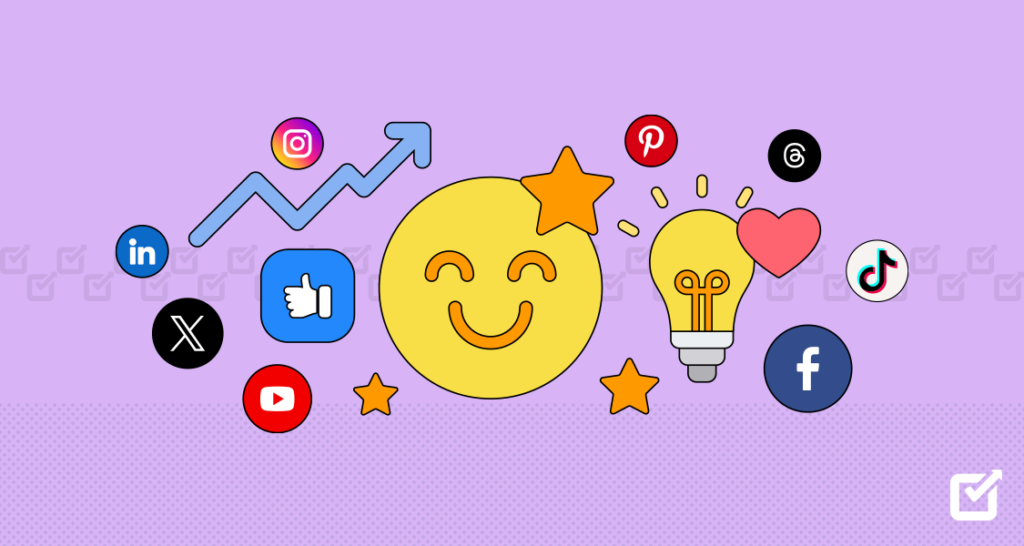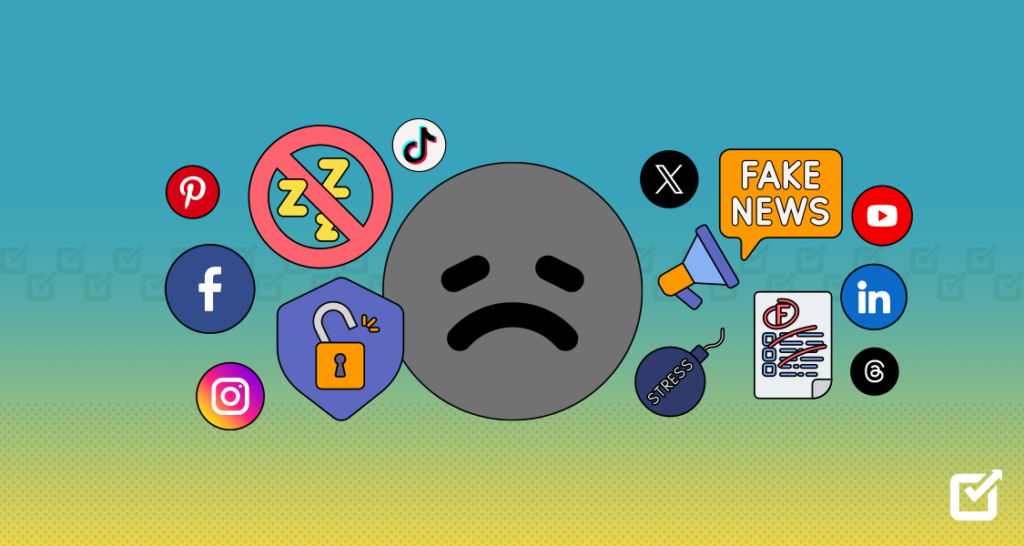Research and Progress

Power & Influence of Social Media: Does Social Media Amplify Meaningful Discourse or Fuel Misinformation?
Introduction
Social media is the culmination of websites and applications that allow users to communicate and share information with each other in a digital environment. What we see on social media can influence our opinions and beliefs on a given topic, so it is important to engage with information and other people in a meaningful way. As such, users are faced with the challenge of seeking out knowledge in a space that is filled with inaccurate, irrelevant, and sometimes misleading information. Matter of Fact, over 40% of all Canadian adults find it difficult to distinguish between trustworthy and false information on social media (Statistics Canada, 2024). Not only that, but nearly three in four Canadians report seeing information they suspect to be false.
To that effect, seasoned social media users can identify inaccurate or misleading information. This lets users access reliable sources on social media, and obtain the relevant knowledge they seek. However, many social media users may fall prey to false information or malware (viruses). Given the reach and rate at which information (and misinformation) can spread through social media, an important question is posed: is social media a benefit or a detriment to humanity?
Positive Side of Social Media
Entertainment
Social media gives everyone a voice. It makes public discussion louder and wider. In the past, governments and mainstream media controlled most public issues. Today, ordinary people can share their opinions on platforms like Twitter (now X), Instagram, and TikTok. The #MeToo movement started on social media, and it helped people talk about sexual harassment and gender equality around the world. Additionally, hashtags like #BlackLivesMatter and #ClimateAction also connected people across countries and inspired action. These examples show that social media is not only for sharing daily life. It can also bring real social change. In 2025, Pew Research Center survey found that 53% of U.S. social media users who under 30 believed these platforms were very important for engaging in political or social issues. This shows that young people use social media to learn about the world and to build social awareness through participating in online discussions and movements
Education
Moreover, social media is not only a tool for entertainment and communication but has also gradually become an important platform for learning and knowledge sharing. Nowadays, more and more people use platforms like YouTube, TikTok to study topics such as mental health, science, economics, and so forth. The short-video format allows knowledge to spread faster and makes it easier to understand. For example, educational YouTube channels like CrashCourse and Kurzgesagt – In a Nutshell, as well as learning creators on TikTok, help students engage and grasp complex concepts. According to uQualio, 52% of students use platforms like YouTube for independent video learning outside of school (2024). This “open learning” model allows everyone to access knowledge, breaks down the barriers of schools and tuition fees, and transforms social media into a decentralized learning space, which fully embodying the spirit of open education.
In brief, social media has transformed how people communicate and learn today. It gives everyone a chance to speak and share ideas. It also makes learning open and easy to access. These changes help make society and education fairer and more inclusive. However, social media is not perfect. It has good sides and bad sides. In the next blog post, our group will look at the other side — how social media can spread false information and influence public opinion in harmful ways.

Negative Side of Social Media
[]

Some Solutions for Social Media
Time Well Spent
It is important to know how to use social media positively, have awareness about digital literacy, and how to reduce the negative impact of social media on our daily lives. We are seeing uses of social media at a higher rate than ever before and so it is really important to engage in meaningful conversations around social media use. One resource I found that demonstrates how social media can be used positively was an article titled “Time Well Spent” written by the Mental Health Coalition (2025). The article talks about a challenge called time well spent and it has a variety of components to it. It starts by giving some really useful conversation starters to get the ball rolling to get teens thinking about effective uses of social media. It all provides all sorts of resources ranging from outlining what is appropriate content to online safety and topics such as well-being or time management. This challenge is a great start for outlining the ways in which social media can be used in a positive way.
Digital Literacy
Spreading awareness about digital literacy starts in the classroom and there are all kinds of online resources that can be used to plan lessons that will be applicable to their students’ learning needs. One helpful resource I found titled “Digital Literacy 101” published by MediaSmarts (2025) talks about how while teachers claim to place a big emphasis on teaching digital literacy to their students, that narrative isn’t being reflected in our classrooms. This resource provides educators with workshops, tutorials, powerpoint presentations as well as digital literacy key concept videos which are all excellent ways to spread awareness.
Public Perception
The reason why resources such as these are important in terms of reducing the negative impact of social media on our daily lives is our perception of social media. According to Pewresearch from their article titled “Views of social media and its impacts on society” (Wike R. et al, 2022) an average of 57% of people in the 19 countries they surveyed see social media as a good thing for democracy in their country.
But contrary to that, in those same 19 countries, 70% believed that the spread of false information is problematic. That makes the importance of keeping students properly educated on the subject that much more important because there is a lot of misinformation out there. By properly teaching them about digital media awareness, this can help to eliminate a lot of those concerns.
References
Bilodeau H., & Khalid A. (2024). The spread of misinformation: A multivariate analysis of the relationship between individual characteristics and fact-checking behaviours of Canadians. Statistics Canada. https://www150.statcan.gc.ca/n1/pub/22-20-0001/222000012024003-eng.htm
MediaSmarts. (2025). Digital Literacy 101. https://mediasmarts.ca/teacher-resources/digital-literacy-101
Park, E. (2025). 42% of social media users say the sites are important for them getting involved with political, social issues. Pew Research Center. https://www.pewresearch.org/short-reads/2025/09/16/42-of-social-media-users-say-the-sites-are-important-for-them-getting-involved-with-political-social-issues/
Wike R., Silver L., Fetterolf J., Huang C., Austin S., Clancy L., & Gubbala S. (2022). Global views of social media and its impacts on society. Pew Research Center. https://www.pewresearch.org/global/2022/12/06/views-of-social-media-and-its-impacts-on-society-in-advanced-economies-2022/
The Mental Health Coalition. (2025). Time Well Spent – Social Media Discussion Guide for Parents of Teens. https://www.thementalhealthcoalition.org/time-well-spent/
uQualio. (2024). Understanding student preferences 2024: Video learning is now an essential! https://uqualio.com/post/understanding-student-preferences-2024-video-learning-is-now-an-essential